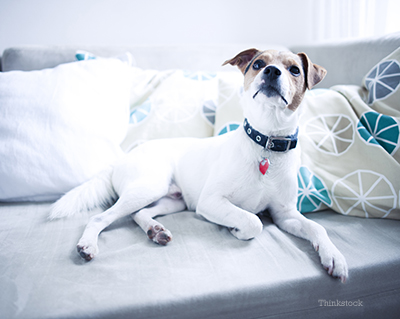
Dr. Phil Zeltzman is a traveling, board-certified surgeon in Allentown, PA. His website is www.DrPhilZeltzman.com. He is the co-author of “Walk a Hound, Lose a Pound” (www.amazon.com).
Zee Mahmood, a veterinary technician in Reading, PA, contributed to this article.
Cold therapy is often an effective, easy solution to routine soreness that may accompany exercise, injury or surgery.
Concept of cold therapy
The application of cold can significantly help reduce swelling and inflammation (a.k.a. irritation) in your dog. It relieves pain by reducing damage to muscles immediately after an injury, surgery or heavy exercise. In addition, cold therapy will decrease muscle spasms and lead to faster healing. Faster healing and less pain means a happier dog, not to mention a happier dog guardian!
Location of cold therapy
Cold therapy is most often applied to joints:
- Shoulder, elbow or wrist in the front leg
- Hip, knee and ankle in the back leg.
It can be used on any body part where swelling or muscle damage occurs.
Technique of cold therapy
[Editor’s Note: Check with your veterinarian to see if cold therapy is right for your dog.]
Several devices can be used to provide cold therapy:
- Homemade ice packs— A simple homemade ice pack can be made by placing crushed ice in a plastic bag, removing excess air, and sealing the bag.
- Commercial gel— Commercial gel packs and wraps would fit much better around a joint. Always follow the manufacturer's instructions on the pack.
- Ice packs and wraps— The simplest device is an ice pack. However its stiffness makes it difficult to wrap around a joint like the ankle.
- Bags of frozen vegetables such as peas or corn— A bag of frozen vegetables, such as peas or corn, is an easy way to have an instant and cheap cooling device. Make sure you label it “ice pack only” with a permanent marker so nobody eats it after multiple thawing cycles!
One of my favorite techniques is to mix 1/4 cup rubbing alcohol and 3/4 cup water in a Ziploc® bag and place it in the freezer. To be safe, put another bag around the first one in case of leakage. For a larger body part, simply multiply the amounts. The result is a slushy solution that conforms or molds very nicely to any part of the body and will apply the cold more evenly.Danger of cold therapy
Burning the skin (similar to frostbite) is probably the biggest risk of applying cold therapy to a pet. Therefore, always place a thin cloth such as a T-shirt or a pillowcase on your dog's skin, and then place the cold pack on top of the cloth. This trick will also reduce the surprise of instantly feeling cold on a sore area.
Usage of cold therapy
Keep the cooling device in place on the affected body part. Leave it in place for about 15 minutes, or until your dog's skin feels cold to the touch. Cold therapy can be repeated every 6 to 8 hours.
If your dog displays any signs of discomfort during this process such as excessive movement, growling or biting, stop the cold therapy treatment immediately.
Cold therapy is an effective, cheap and easy way to help your dog feel better after an injury or exercise, helping them to enjoy more happiness and quality time with you and your family.
Questions to ask your veterinarian
- Can I use cold therapy on my dog?
- Which exact protocol would you suggest?
- Which cooling device should I use in my particular dog?
If you have any questions or concerns, you should always visit or call your veterinarian -- they are your best resource to ensure the health and well-being of your pets.
